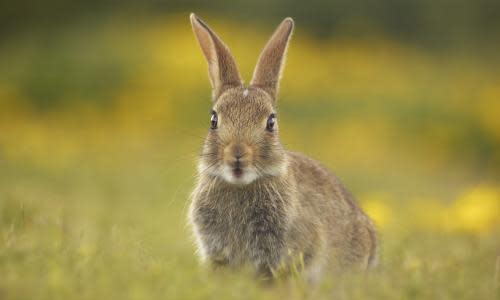Country diary: the warren is here, but the fluffle of rabbits has gone

Dawn over the meadow at Sandy Warren used to bring rabbits bobbing up out of their burrows to graze over grass as short as their own fur. Thirty or 40 pairs of eyes on open ground meant that they were disinclined to move, other than to shuffle forwards for a fresh bite. This was their home turf, just as it had been for hundreds of generations before.
There are numerous named warrens in the heathlands. Rabbit farming appeared to give the best return in the middle ages for landowners who tried and failed to grow crops in thin, acidic, sandy soil. A coney warren under royal licence was the poorer hunting gentry’s deer park. By Henry VIII’s reign, Clophill Warren, a dozen miles away, could be leased for £3 a year. In late Victorian times, fecundity and abundance were registered in the records of this estate on the hill, where the “bag” from Arthur Wellesley Peel’s shoots numbered in the hundreds every time.
And, of course, rabbits spread out of every warren to more fertile land. A local farmer, telling me of his memories of rabbits immediately after the last war, described them as “a plague”. Every day when I walked alongside the pony paddocks and sheep fields to the foot of this RSPB reserve, I could count dozens squatting in each field. Today, I spotted just four rabbits. Such dearth has been typical of the whole county.
In Sandy Warren meadow, the grass has grown taller than a rabbit’s ears and there’s not a bunny in sight. Most of the grazers probably fell prey to the highly contagious viral haemorrhagic disease (VHD) – the RSPB’s site manager tells me its bloody-nosed symptoms have been observed in the quarry over the road.
An older generation will remember that we have been here before – the arrival of myxomatosis in 1953 caused an estimated 99% fall in the UK’s rabbit population. But that collapse came at a time when wildlife was in much better shape. Before VHD, two-thirds of a stoat’s diet consisted of rabbits – where will such predators find alternative prey in today’s woefully depleted landscapes?
• Country Diary is on Twitter at @gdncountrydiary

 Yahoo News
Yahoo News 